Did you know that fennel leaves, also known as fennel fronds or fennel herb, are often overlooked in recipes? People tend to focus on the crunchy bulb, but these lacy fronds shouldn’t go to waste. Not only do they have a delicate anise flavor, but they also add a unique burst of freshness to dishes that can elevate your culinary creations to new heights.
While the fennel fronds are best used fresh and don’t hold up well to long cooking, there are many exciting ways to incorporate them into your meals. Whether it’s adding them to salads for a hint of licorice or using them to make fennel pesto, the possibilities are endless. And let’s not forget about the stalks! They have a signature mild licorice flavor and can be finely chopped and used raw or cooked to add flavor to fish dishes.
If you’re looking for even more ways to make the most of fennel leaves and stalks, stay tuned. In this article, I’ll share five creative ways to use fennel fronds and stalks, explore the favorite ways chefs cook with fennel leaves, break down the different parts of a fennel plant that can be utilized, and provide tips on cutting and using fennel in your cooking. Plus, I’ll share some fennel substitutes for those times when you’re in a pinch.
Key Takeaways:
- Fennel leaves, also known as fennel fronds or fennel herb, are often overlooked in recipes.
- These lacy fronds have a delicate anise flavor and add a burst of freshness to dishes.
- Fennel stalks have a mild licorice flavor and can be chopped and used raw or cooked.
- Five creative ways to use fennel fronds and stalks will be shared.
- Stay tuned to learn the favorite ways chefs cook with fennel leaves and more!
Five Ways to Use Fennel Fronds and Stalks
When it comes to using fennel fronds and stalks, there are several creative ways to incorporate them into your cooking. Here are five ideas to make the most of your fennel tops:
- Make a flavorful fennel-infused oil: Combine fennel fronds and stalks with olive oil in a blender or food processor. Strain the mixture to remove any solids and use the infused oil to elevate the taste of your dishes.
- Create a refreshing fennel tea: Boil fennel fronds and stalks in water for 10 minutes. Strain the liquid and enjoy a soothing and aromatic tea that can aid digestion.
- Add a burst of freshness to salads: Chop fennel fronds and stalks and toss them with your favorite leafy greens, cucumbers, and tomatoes. The anise flavor will bring a unique twist to your salad.
- Elevate your seafood dishes: Finely chop fennel fronds and stalks and use them as a garnish for grilled fish, shrimp, or scallops. The mild licorice notes will complement the flavors of the seafood.
- Create a flavorsome vegetable broth: Save your fennel fronds and stalks to add to homemade vegetable broth. Simmer them with other vegetable scraps to create a fragrant and flavorful base for soups and stews.
These are just a few ways to unlock the potential of fennel fronds and stalks in your kitchen. Get creative and experiment with these versatile parts of the fennel plant to add a fresh and vibrant touch to your culinary creations.
Fennel Leaves: A Favorite Among Chefs
Chefs from across the United States have their own favorite ways to incorporate fennel leaves into their dishes. The delicate anise flavor of fennel leaves adds depth and complexity to a variety of recipes. Whether used as a garnish or a key ingredient, fennel leaves elevate dishes to new heights of flavor. Here are some favorite ways to cook with fennel leaves:
- Fresh Salad: Fennel leaves bring a refreshing twist to salads. Their delicate texture and anise flavor complement a wide range of ingredients. Try tossing fennel leaves with crisp lettuce, juicy tomatoes, and tangy vinaigrette for a delightful salad.
- Fragrant Pesto: Blend fennel leaves with garlic, Parmesan cheese, pine nuts, and olive oil to create a vibrant fennel pesto. This aromatic sauce can be used on pasta, spread on sandwiches, or even drizzled over roasted vegetables.
- Infused Oil: Steep fennel leaves in olive oil to infuse it with their distinctive flavor. Use this flavorful oil to dress salads, marinate meats, or sauté vegetables.
- Herbaceous Sauce: Chop fennel leaves finely and combine them with parsley, basil, and mint to create a flavorful herb sauce. This versatile sauce pairs well with grilled fish, roasted chicken, or roasted vegetables.
- Aromatic Broth: Add fennel leaves to homemade broth to infuse it with a subtle anise flavor. This aromatic broth can be used as a base for soups, stews, or risottos.
These are just a few examples of the many ways professional chefs use fennel leaves to enhance their culinary creations. Exploring different cooking techniques and experimenting with fennel leaves can lead to delightful discoveries in the kitchen.
Next, let’s delve into the different parts of a fennel plant and discover their culinary uses.
Fennel: A Versatile Vegetable with No Waste
Fennel, a culinary powerhouse, is a versatile vegetable that offers a myriad of uses in the kitchen. From its roots to its flowers, every part of the fennel plant can be utilized in various culinary applications. Let’s take a closer look at the different parts of this remarkable vegetable:
Fennel Bulb
The fennel bulb is the most commonly used part of the vegetable. It has a crisp texture and a slightly sweet, anise-like flavor. This versatile bulb can be enjoyed raw in salads, thinly sliced for a refreshing crunch, or roasted to bring out its natural sweetness. It makes a delightful addition to stir-fries, soups, stews, and even pickles.
Fennel Stalks
Fennel stalks are the long, fibrous stems that support the bulb and fronds. While they may not be as tender as the bulb, these stalks are packed with flavor. Finely chopped fennel stalks can add a subtle anise taste to salads, sauces, and marinades. They also make excellent skewers for grilling, infusing meats and vegetables with their aromatic essence.
Fennel Fronds
The feathery fennel fronds, resembling dill or carrot tops, are an excellent herb to have on hand. With their delicate texture and distinct anise flavor, they are perfect for garnishing dishes, adding flavor to soups and stews, or infusing oils and vinegars. Fennel fronds can also be used as a substitute for dill in various recipes.
Fennel Flowers
The bright yellow fennel flowers not only add visual appeal to dishes but also impart a milder anise flavor. They can be used as a garnish on salads and desserts, or infused in syrups and teas for a subtle floral note.
Fennel Seeds
Fennel seeds are a popular spice used in both sweet and savory dishes. These small, oval seeds have a strong anise flavor and a sweet aroma. They can be used whole or ground to enhance the taste of baked goods, curries, sauces, sausages, and even cocktails.
Fennel Roots
The fennel roots, also known as the “feet” of the plant, are often discarded, but they shouldn’t be overlooked. They have a crisp texture and a delicate anise flavor, similar to the bulb. Fennel roots can be sliced and added to salads or roasted alongside other root vegetables for a tasty side dish.
With fennel, there is truly no waste. Every part of the plant can be utilized to elevate the flavor and visual appeal of your dishes, while bringing a hint of delicate anise to the table.
Next, we’ll explore the taste profile of fennel and its unique flavor characteristics.
| Fennel Part | Culinary Uses |
|---|---|
| Fennel Bulb | Salads, roasting, sauces, pickling |
| Fennel Stalks | Chopped for flavoring, grilling skewers |
| Fennel Fronds | Garnishing, flavoring, infusing oils and vinegars |
| Fennel Flowers | Garnishing, infusing syrups and teas |
| Fennel Seeds | Spices, baked goods, curries, sauces, sausages |
| Fennel Roots | Salads, roasting |
What Does Fennel Taste Like?
Fennel, with its distinctive anise flavor, adds a unique taste to recipes, making it a favorite among those who enjoy the licorice-like essence. The flavor of fennel can vary depending on how it is cooked, allowing for different levels of intensity and sweetness.
When diced and sautéed with onions as the first step in making a soup or stew, fennel becomes very sweet, enhancing the overall flavor profile of the dish. This cooking technique mellows out the anise flavor, making it more approachable for those who prefer a subtle taste.
To intensify the fennel flavor, crushed or chopped fennel seeds can be added to a dish. These seeds contain the concentrated essence of fennel and can impart a stronger anise flavor. They work well in a variety of cuisines, including Mediterranean and Indian dishes.
When used raw in a salad, the flavor of fennel is more pronounced. Its crunchy texture and refreshing taste pair well with citrus fruits and are further enhanced by the vinaigrette used. This is a great way to showcase the bright, licorice-like notes of fennel.
Overall, fennel’s taste is a harmonious blend of mild anise and licorice flavors. Cooking with fennel allows you to customize its taste and explore various flavor profiles, making it a versatile ingredient in your culinary repertoire.
Image showing fennel bulb. Fennel has a mild anise or licorice flavor that adds a unique taste to recipes.
How to Cut Fennel
Cutting fennel can be a simple process once you know how to do it. Here’s a step-by-step guide:
- Start by trimming off the fennel stalks and fronds, setting them aside for later use in other recipes.
- Next, cut off the root end of the fennel bulb.
- Stand the fennel bulb upright on the cut end and halve it vertically.
- Lay each half on the cut side and slice vertically into your desired thickness. For thinner slices, you can use a mandoline slicer.
- If you’re looking for diced fennel, cut the sliced fennel into strips, then crosswise into small cubes.
- For recipes that require fennel wedges, slice the fennel bulb lengthwise into wedges, making sure to keep the core intact.
Now that you know how to cut fennel, you can confidently prepare this versatile vegetable for your favorite recipes. Whether you’re adding it to salads, roasting it as a side dish, or incorporating it into soups and stews, cutting fennel is the first step to unlocking its delicious flavors.
How to Use Fennel in Cooking
Discover the endless culinary possibilities of fennel with these delicious recipe ideas. Whether you’re a seasoned chef or an amateur home cook, fennel can add a unique and refreshing flavor to your dishes.
Fennel Salad with Citrus Vinaigrette
Fennel’s fresh and crisp texture makes it the perfect star of a refreshing salad. Thinly slice the fennel bulb and toss it with your favorite mixed greens. To enhance the flavors, add segments of juicy citrus fruits like oranges and grapefruits. Top it off with a zesty citrus vinaigrette for a burst of tangy goodness.
Roasted Fennel with Parmesan
The caramelized sweetness of roasted fennel pairs perfectly with the salty tang of Parmesan cheese. Slice the fennel bulb into wedges, drizzle with olive oil, and sprinkle with salt and pepper. Roast in the oven until tender and golden. Finish it off by grating some Parmesan over the top for a rich and satisfying side dish.
Fennel-Potato Soup
Create a comforting soup by combining fennel and potatoes. Start by sautéing chopped fennel bulbs and onions until softened. Add diced potatoes, vegetable broth, and a touch of cream. Simmer until the potatoes are tender, then blend until smooth. Season with salt, pepper, and a sprinkle of fennel fronds for an extra pop of freshness.
“Fennel’s versatility in both raw and cooked applications allows chefs to experiment and create unique flavor profiles in their dishes. Its delicate anise flavor adds a subtle yet distinctive dimension to any recipe.”
Fennel-Crusted Salmon
Elevate your seafood game with a fennel-crusted salmon dish. Crush fennel seeds and mix them with breadcrumbs, salt, and pepper. Press the mixture onto the salmon fillets and pan-sear them until golden and cooked through. Serve the salmon over a bed of sautéed fennel and garnish with fennel fronds for an elegant and flavorful meal.
Grilled Fennel with Balsamic Glaze
Take advantage of fennel’s unique flavor by grilling it to perfection. Slice the fennel bulbs into thick wedges and brush them with olive oil. Grill until tender and nicely charred. Drizzle with a tangy balsamic glaze and sprinkle with sea salt for a simple, yet mouthwatering side dish.
| Fennel Recipe Ideas |
|---|
|
Experiment with these fennel recipe ideas to elevate your cooking and explore the versatility of this flavorful herb. Incorporate fennel into your dishes to add a touch of freshness and a hint of anise. Whether you’re looking for a light salad, a hearty soup, or a gourmet seafood dish, fennel is the perfect ingredient to take your culinary creations to the next level.
Fennel Substitutes
While fennel has its distinctive flavor, there are some alternatives that can be used as substitutes. Here are a few options:
- Dill: Dill is a popular herb with a similar flavor profile to fennel. It offers a fresh and slightly tangy taste, making it a great substitute in recipes that call for fennel.
- Anise Seeds: Anise seeds have a strong licorice flavor, similar to fennel. They can be used as a substitute in recipes that require the distinctive taste of fennel or as an ingredient in spice blends.
- Celery: Celery stalks can be a suitable replacement for fennel in soups, stews, and salads. Although it lacks the anise flavor, celery provides a crisp texture and adds a refreshing taste to dishes.
- Caraway Seeds: Caraway seeds have a warm, earthy flavor with a hint of anise. They can be used as a substitute for fennel seeds in recipes or as a seasoning in various dishes.
- Tarragon: Tarragon is an herb with a slightly licorice-like flavor. It can be used as a substitute for fennel leaves in recipes such as salads, dressings, and sauces.
If you’re looking for alternatives to fennel, these options can help you recreate some of the unique flavors and aromas that fennel brings to dishes. Experiment with these substitutes to discover new and exciting taste combinations.
Note: Image shows a variety of fresh herbs including dill, anise seeds, celery, caraway seeds, and tarragon, which can be used as fennel substitutes.
Conclusion
Fennel leaves, also known as fennel fronds, are a versatile herb that can elevate your dishes with a fresh burst of flavor. Whether you’re creating vibrant salads or experimenting with homemade pesto, fennel leaves bring a unique anise taste that will impress your taste buds.
When it comes to cooking with fennel, the possibilities are endless. You can use the delicate fronds to add a hint of licorice to your favorite seafood recipes or as a refreshing garnish for cocktails. The robust stalks, on the other hand, can be finely chopped and used to infuse flavor into your culinary creations.
Don’t underestimate the power of fennel leaves in your cooking. Embrace their versatility and let them unlock a world of vibrant flavors in your dishes. So next time you’re at the grocery store, grab a bunch of fresh fennel leaves and let your creativity take flight in the kitchen!

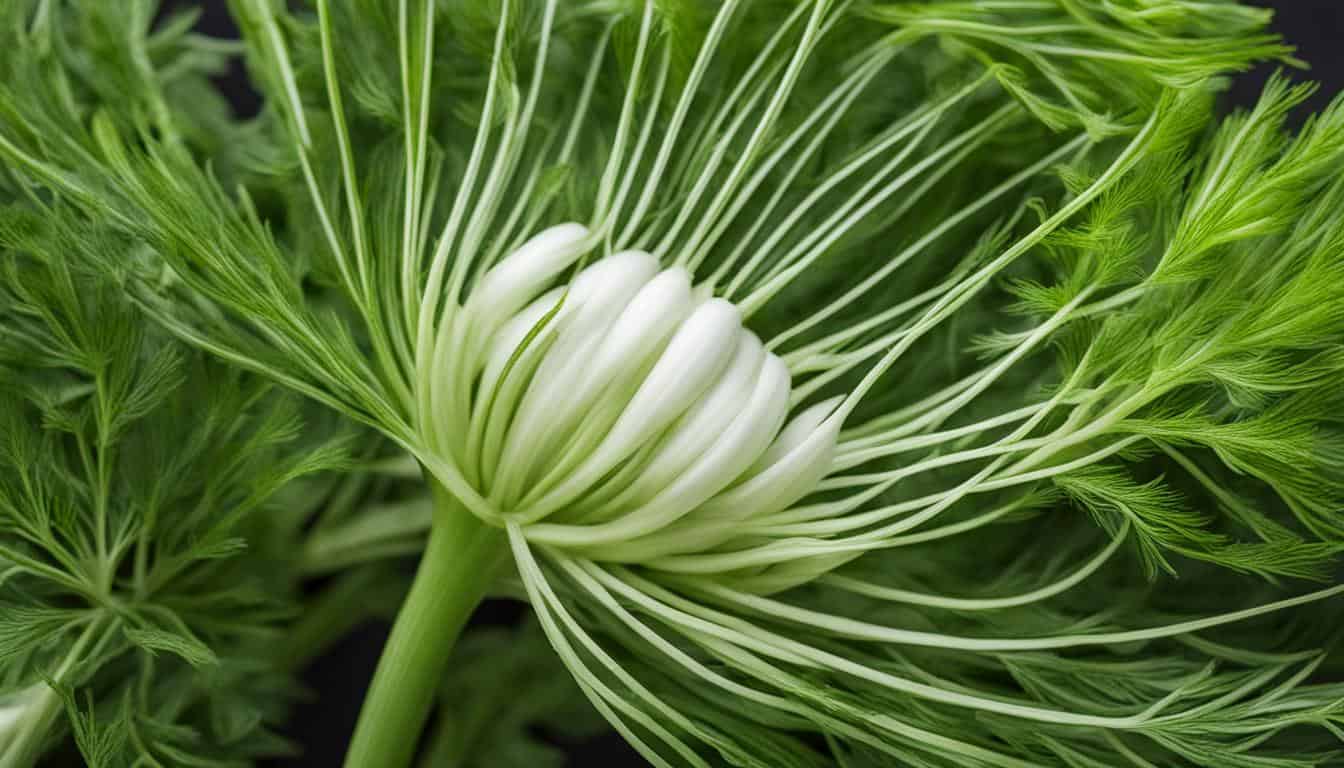
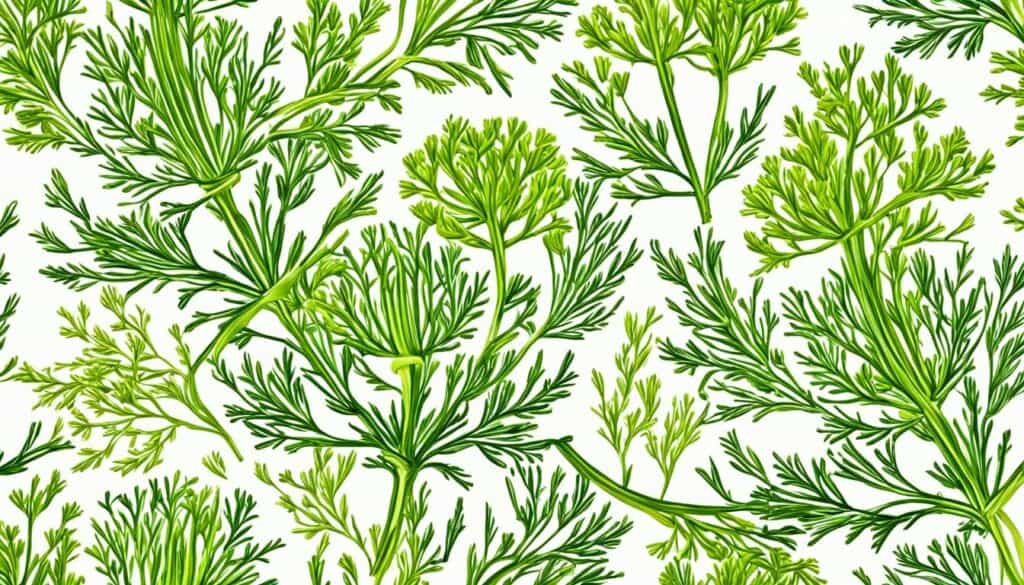
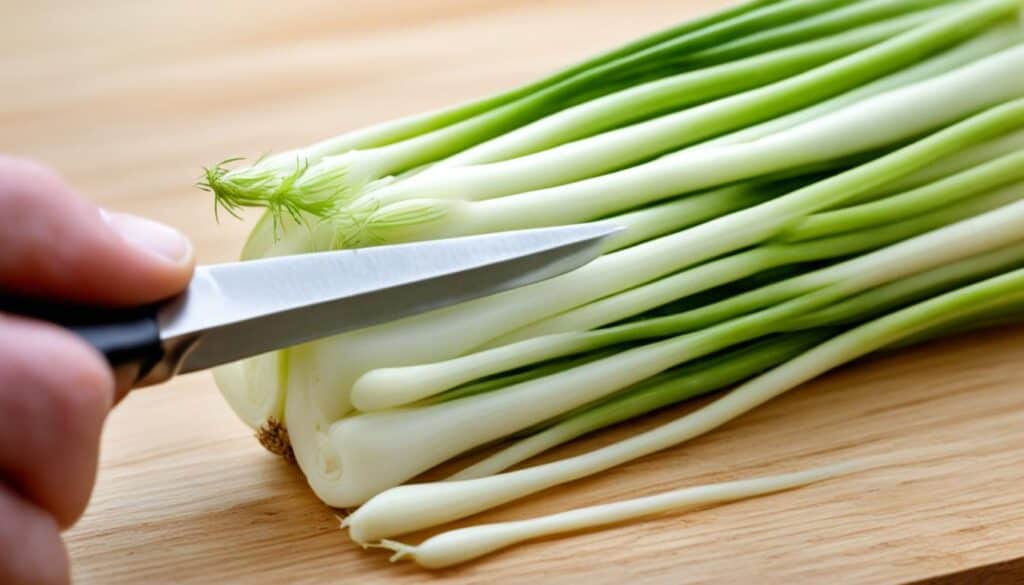
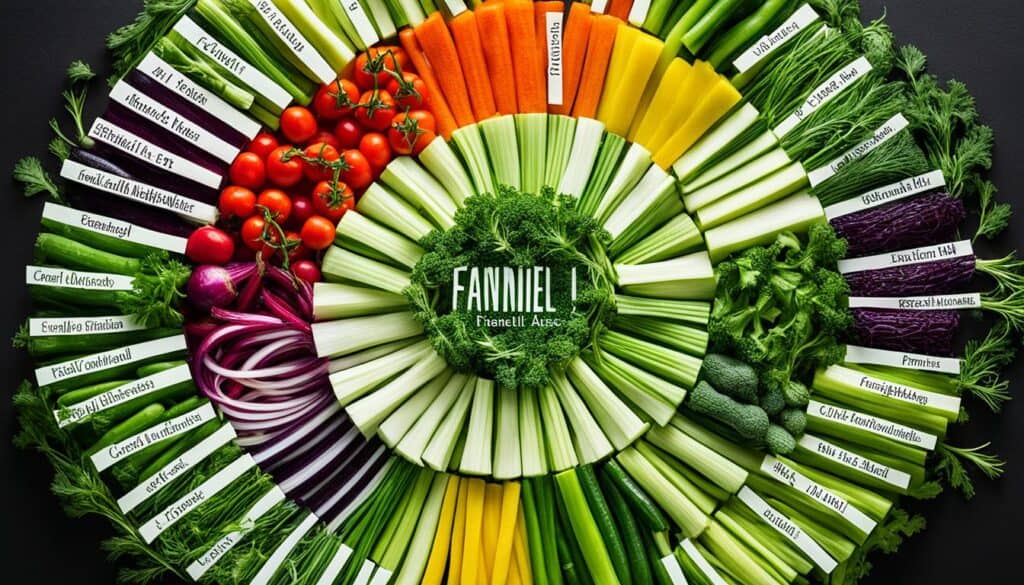

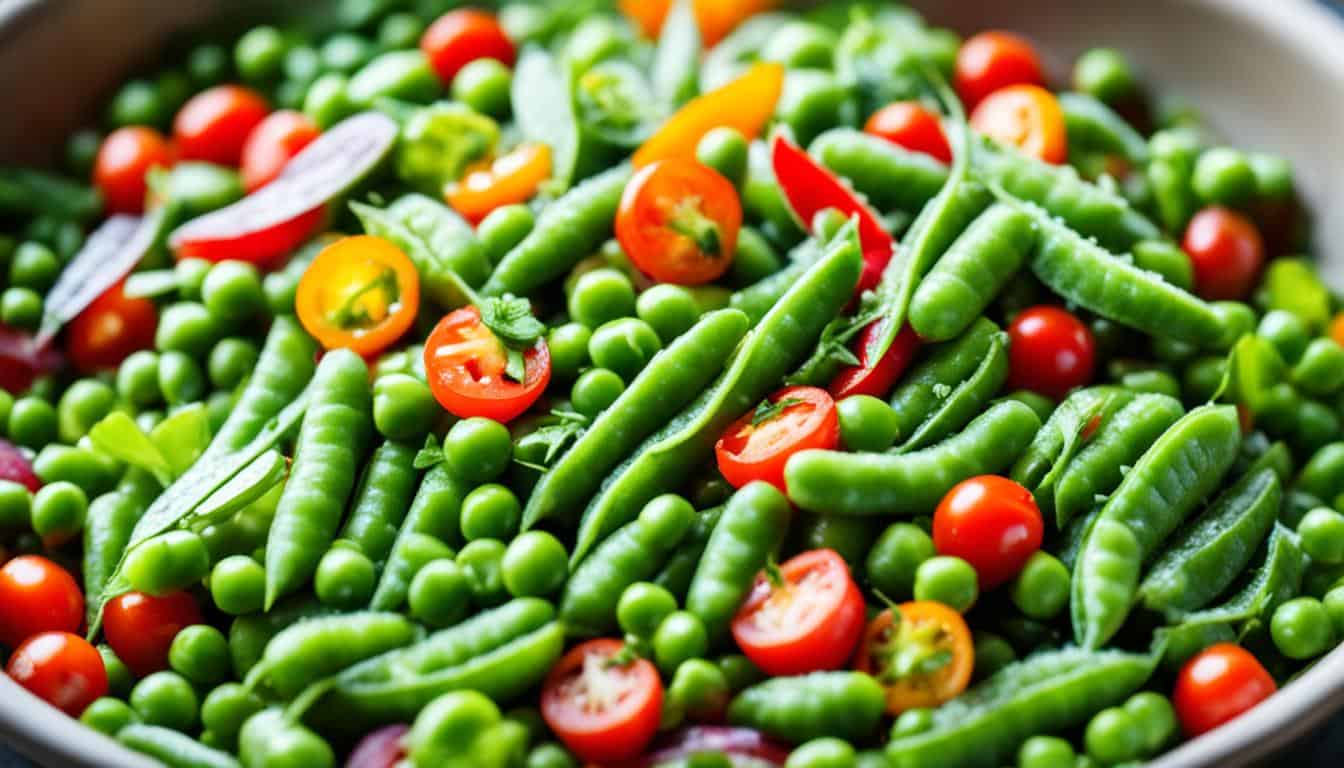
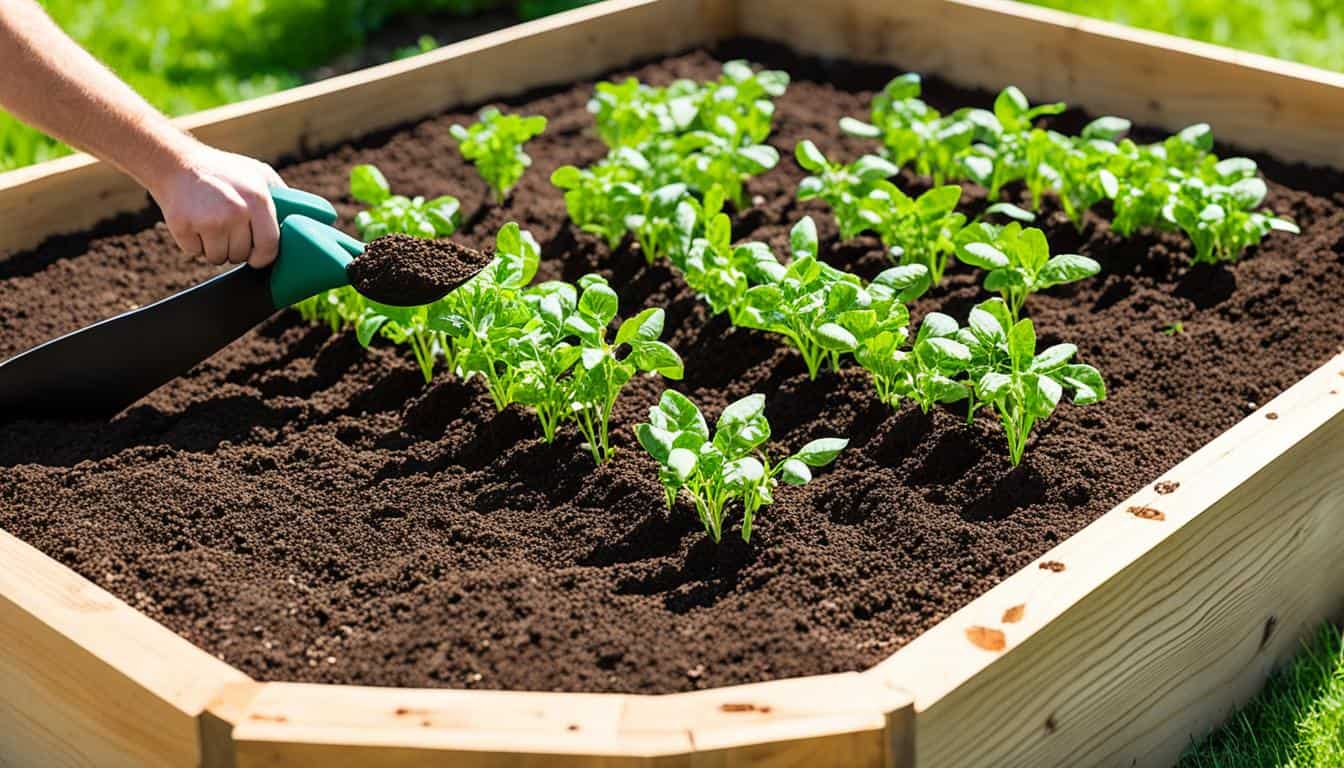
Leave a Reply